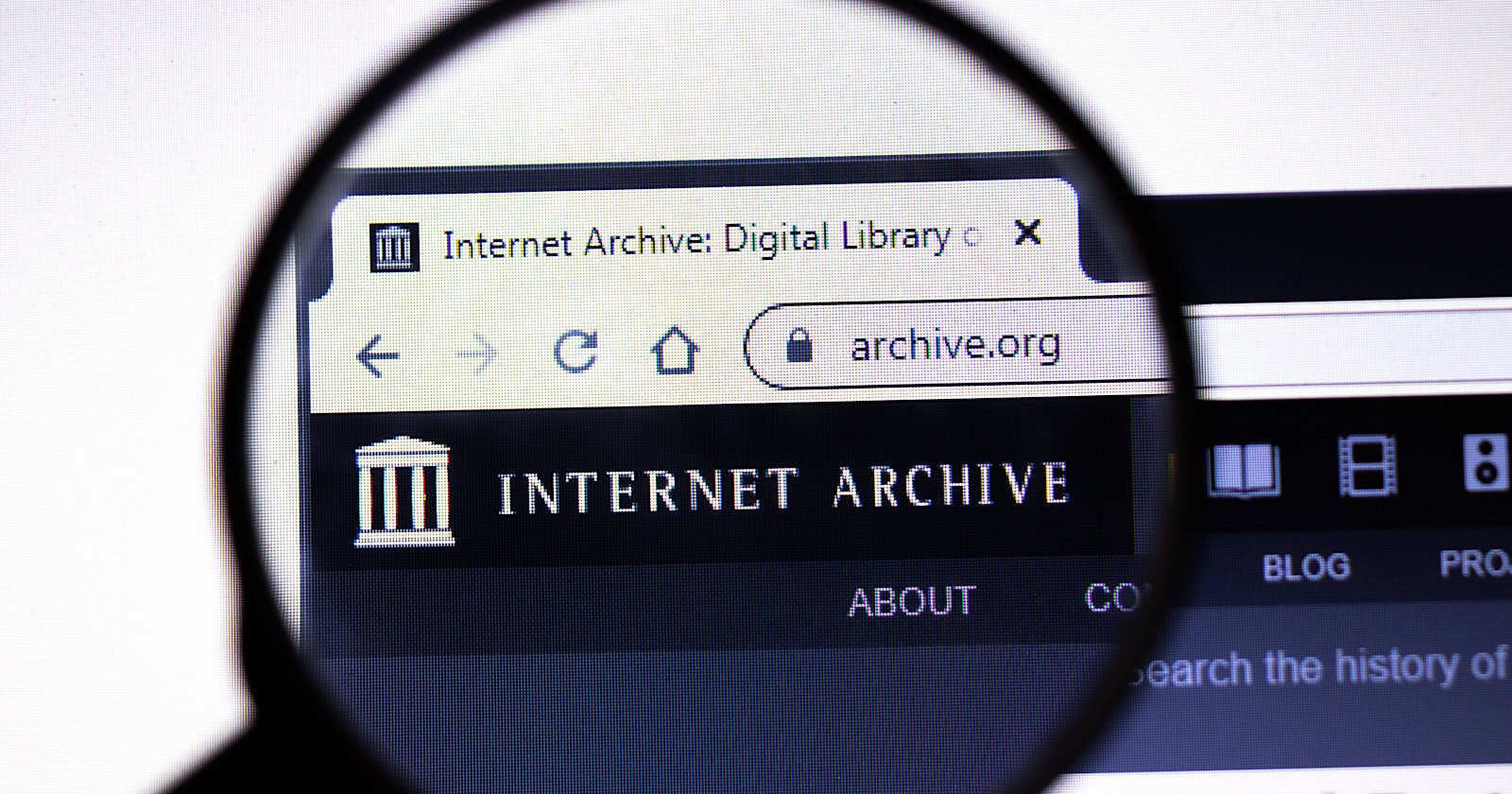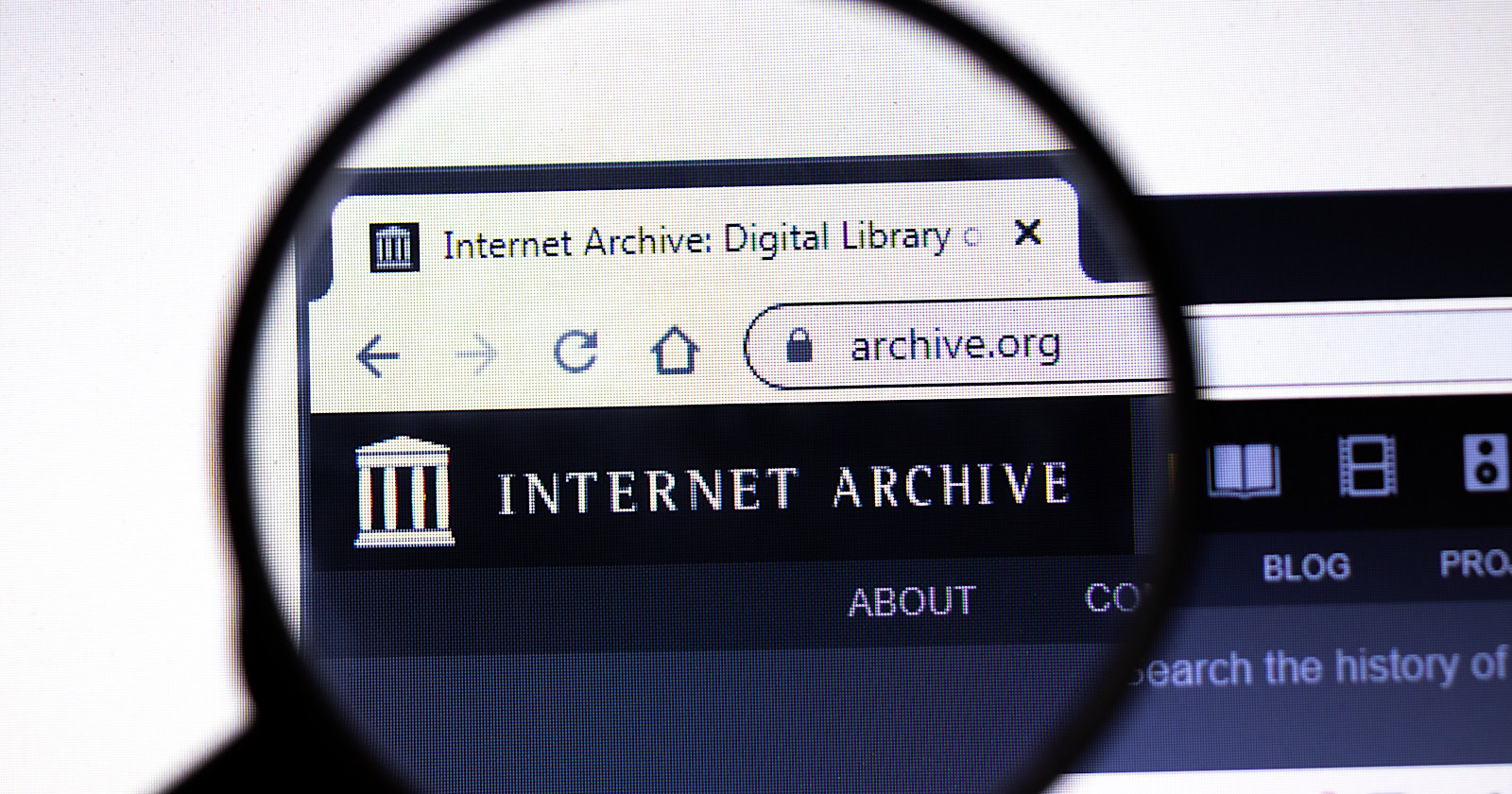Google now integrates Wayback Machine links directly into search results. This feature aids users in accessing archived web pages.
Google’s integration of Wayback Machine links into its search results is a significant enhancement for users. The Wayback Machine, a digital archive of the internet, allows users to view past versions of web pages. Integrating these links into search results helps users find historical data quickly.
This is particularly useful for researchers, journalists, and anyone needing to verify past information. It also enhances the reliability and depth of Google’s search capabilities. By providing access to archived content, Google ensures users can retrieve valuable information that may no longer be available on the live web. This integration marks a step forward in making internet history more accessible.
Introduction To Wayback Machine
Google has made a groundbreaking move by integrating Wayback Machine links into its search results. This integration allows users to access archived versions of web pages easily. This section introduces the Wayback Machine and its significance.
What Is The Wayback Machine?
The Wayback Machine is a digital archive of the internet. It is managed by the non-profit organization, Internet Archive. This tool allows users to see how websites looked in the past. It captures and stores snapshots of web pages at different points in time. These snapshots are accessible to the public for free.
Historical Significance
The Wayback Machine has a rich historical significance. It serves as a valuable resource for researchers, historians, and curious minds. It helps in preserving the digital history of the web. This tool is crucial for understanding the evolution of websites. For instance, one can view the first version of popular websites like Google or Amazon.
Here’s a brief overview of its importance:
| Aspect | Significance |
|---|---|
| Research | Helps in studying web development trends. |
| Preservation | Ensures digital history is not lost. |
| Legal | Used in court cases to provide historical evidence. |
The Wayback Machine is not just a tool. It is a treasure trove of digital history. Its integration into Google search results enhances the accessibility of this valuable resource.

Credit: cloudisland.nz
Google’s New Integration
Google has now integrated Wayback Machine links into its search results. This is a major enhancement for users. It helps access archived web pages directly from Google. This new feature is set to improve user experience and information retrieval.
Overview Of Integration
The integration is simple yet powerful. Google now displays Wayback Machine links directly in search results. Users can click these links to view archived versions of web pages. This makes it easy to find older content that might have been changed or removed. The links appear alongside the standard search results, providing a quick reference to the page’s history.
Purpose And Benefits
The primary purpose of this integration is to enhance information accessibility. Users can now track changes to web content over time. This is especially useful for researchers, journalists, and students. It helps verify the authenticity and evolution of information.
- Improves access to historical content
- Helps verify changes to web pages
- Supports research and fact-checking
Another key benefit is the preservation of digital content. Many web pages get deleted or altered. The Wayback Machine keeps a record of these changes. By integrating these links, Google helps preserve the internet’s history. This is crucial for maintaining an accurate digital archive.
Wayback Machine Impact On Search Results
Google’s integration of Wayback Machine links into search results is a game-changer. It enhances user experience and provides greater accessibility to archived content.
User Experience Enhancement
With Wayback Machine links, users can now access older versions of web pages. This feature is especially useful when current pages are unavailable or have changed content.
Users gain more control over the information they seek. They can compare past and present web content easily. This enhances their overall search experience.
Students, researchers, and history enthusiasts benefit greatly from this. They can retrieve archived web pages quickly and efficiently.
Accessibility To Archived Content
The integration improves accessibility to archived web pages. It offers a valuable resource for those in need of historical web data.
Businesses can use this feature to track changes in competitors’ websites. Journalists can cite older versions of web pages as sources. This ensures that information remains available even if the original page is taken down.
Overall, this feature democratizes access to historical web content. It makes the internet a more robust and reliable resource.
| Benefits | Impact |
|---|---|
| User Experience | Enhanced by access to older web content |
| Accessibility | Improved access to archived pages |
| Reliability | Ensures historical data remains available |
Wayback Machine Technical Aspects
Google’s integration of Wayback Machine links into search results is groundbreaking. This section delves into the technical aspects of this integration. Understanding how it works and the backend processes involved is crucial for grasping the full impact.
How The Integration Works
Google’s search algorithm now includes Wayback Machine links. This change enhances the user experience. Users can access archived versions of web pages directly from search results.
The integration is seamless. When a user searches, Google displays a snapshot link. This link leads to the archived version on the Wayback Machine. It provides historical content access effortlessly.
Steps:
- User searches for a keyword on Google.
- Google processes the search query.
- Google identifies relevant archived pages.
- Google displays Wayback Machine links in the search results.
Backend Processes
The backend processes involve complex algorithms. Google’s crawlers index web pages regularly. They also identify changes and deletions. This data is then cross-referenced with the Wayback Machine’s archives.
The integration requires continuous data synchronization. Google’s servers communicate with the Wayback Machine’s servers. This ensures that the most recent archived versions are always available.
Data Flow:
| Step | Description |
|---|---|
| 1 | Google crawls and indexes web pages. |
| 2 | Google identifies changes or deletions. |
| 3 | Data is sent to Wayback Machine. |
| 4 | Wayback Machine archives the page. |
| 5 | Google updates search results with links. |
This integration improves data retention and access. Users benefit from a richer search experience. Archived content is just a click away.
Case Studies
Google’s integration of Wayback Machine links into search results has created a buzz. This feature allows users to access archived versions of web pages directly from Google. Let’s explore some real-world examples and user experiences that highlight the impact of this integration.
Examples Of Archived Content
Many websites change their content over time. Sometimes, original information gets lost. The Wayback Machine helps users find old versions of web pages. Below are some examples:
| Website | Current Content | Archived Content |
|---|---|---|
| Example.com | Updated product descriptions | Original product descriptions from 2010 |
| NewsSite.org | Latest news articles | Archived news articles from 2005 |
| BlogSite.net | New blog posts | Archived blog posts from 2012 |
User Testimonials
Users have shared their experiences with this new feature. Many find it extremely useful. Here are some testimonials:
- John D.: “I found an old recipe I loved. The Wayback Machine saved it!”
- Sarah K.: “Researching past news articles is now easier. This feature is a game-changer.”
- Mark T.: “I needed to see how a website looked years ago. This made it possible.”
The integration of Wayback Machine links into Google search results helps users. They can easily find old web pages. This feature is valuable for research, nostalgia, and more.
Wayback Machine Benefits For Researchers
Google’s integration of Wayback Machine links into search results offers numerous benefits for researchers. This new feature enhances access to historical web data, providing a treasure trove of information. Researchers across various fields can leverage this tool to support their work with archived web pages.
Academic Research
Academics often need access to older web pages for their studies. The Wayback Machine integration makes this easier. Students and professors can now find historical data directly in Google search results. This saves time and improves research accuracy.
For instance, a history student might need to see how a website looked in 2005. Previously, they had to visit the Wayback Machine separately. Now, they can access this data without leaving Google. This seamless integration aids in efficient data collection.
Benefits for Academic Research:
- Faster access to archived web pages
- Improved accuracy in historical data
- Streamlined research process
- Enhanced learning experience
Journalistic Use Cases
Journalists can greatly benefit from this new feature. Access to historical web content is crucial for investigative reporting. With Wayback Machine links in search results, journalists can verify sources and track changes over time.
For example, a journalist investigating a company’s history can use these links. They can find old press releases or web pages, ensuring their reporting is accurate. This adds credibility to their work and helps in fact-checking.
Benefits for Journalistic Use Cases:
- Quick access to historical web content
- Enhanced source verification
- Accurate tracking of changes over time
- Improved fact-checking
Wayback Machine Privacy And Ethical Considerations
With Google integrating Wayback Machine links into search results, privacy and ethical considerations arise. Users need to be aware of how this affects their data and online behavior.
Data Privacy
Google’s integration of Wayback Machine links raises data privacy concerns. Users may wonder if their past online activities will resurface.
Here are key points to consider:
- Archived pages may contain personal information.
- Users might not have consented to long-term storage.
- Data from deleted pages can reappear.
Ethical Implications
Ethical implications are significant with this new feature. It affects how we perceive online permanence.
Consider the following:
- Should old content be easily accessible?
- Do users have the right to erase their digital footprints?
- How does this impact reputation management?
Both data privacy and ethical implications need careful thought. Users should be aware of potential risks.

Credit: www.demandtalk.com
Wayback Machine Future Prospects
The integration of Wayback Machine links into Google search results presents exciting future prospects. This feature could revolutionize how we access historical web content. Let’s explore the potential developments and user expectations.
Potential Developments
- Enhanced Search Accuracy: Google may improve search accuracy by providing historical content.
- New Analytics Tools: Developers might create new tools to analyze web history trends.
- Better Content Verification: Journalists can verify content changes over time.
- Educational Resources: Schools could use archived websites as learning materials.
User Expectations
Users expect a seamless experience when accessing historical web pages. The following table outlines key user expectations:
| Expectation | Description |
|---|---|
| Speed | Fast loading times for archived pages. |
| Accuracy | Precise and reliable historical data. |
| Accessibility | Easy access on all devices. |
| User Interface | Intuitive and user-friendly design. |
Meeting these expectations will be crucial for user satisfaction. Google and Wayback Machine must ensure these standards are met.

Credit: www.linkedin.com
Frequently Asked Questions
What Is The Wayback Machine?
The Wayback Machine is a digital archive of the web. It allows users to see previous versions of websites.
How Does Google Use Wayback Machine Links?
Google integrates Wayback Machine links in search results. This helps users access archived versions of web pages.
Why Is The Wayback Machine Important?
The Wayback Machine preserves digital history. It provides access to old versions of web pages, aiding research and verification.
Can I See Deleted Web Pages?
Yes, the Wayback Machine allows viewing deleted web pages. It offers an archive of previous website versions.
Conclusion
Integrating Wayback Machine links into search results enhances user experience. It provides access to archived web pages effortlessly. This feature benefits researchers, students, and history enthusiasts. It makes retrieving past content easier and more reliable. Google’s innovation continues to improve the search experience for everyone.
Stay tuned for more exciting updates.

